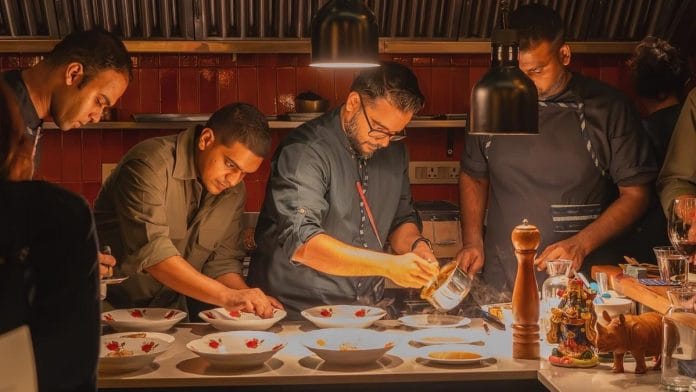Mumbai:Booking a table at Papa’s is a bit like playing fastest finger first on Kaun Banega Crorepati. The Bandra restaurant has just 12 seats and opens reservations on the first of every month at exactly 11 am. All slots are usually gone in under three minutes.
“Papa’s has redefined bougie-ness for Mumbai with its rabbit sausage and clams in a cocktail,” said Priyanka Chahar, a 29-year-old fashion boutique owner in Colaba, who’s only managed to get in twice since the restaurant opened in February 2024. “They don’t scream for attention. They didn’t have to do anything to get the eyeballs.”
It works like a charm at a time when elusive is the new exclusive. But unlike the wave of hush-hush pop-ups and chefs’ tables in living rooms, Papa’s intimate, curated experience comes with a serious whiff of glamour. Celebrity paparazzo Shawn spilled the tea, revealing he has spotted everyone from Dua Lipa, Virat Kohli, and Anushka Sharma to Alia Bhatt, Ranbir Kapoor, and Ranveer Singh at Papa’s.
The 12-course tasting menu is an Omakase-style experience that covers red ants to dry aged duck to fries for dessert. It’s one of Mumbai’s most sought-after dining experiences, and it’s all by word of mouth.
Perched above Veronica’s, a New York-style café and sandwich shop in Bandra’s Ranwar village, Papa’s sits in what used to be the neighbourhood’s beloved St Jude’s bakery. It delivers fine dining minus the fuss and formality. So laidback, in fact, that it opens only Wednesday to Saturday, and the entire team is taking a month-long break in July.
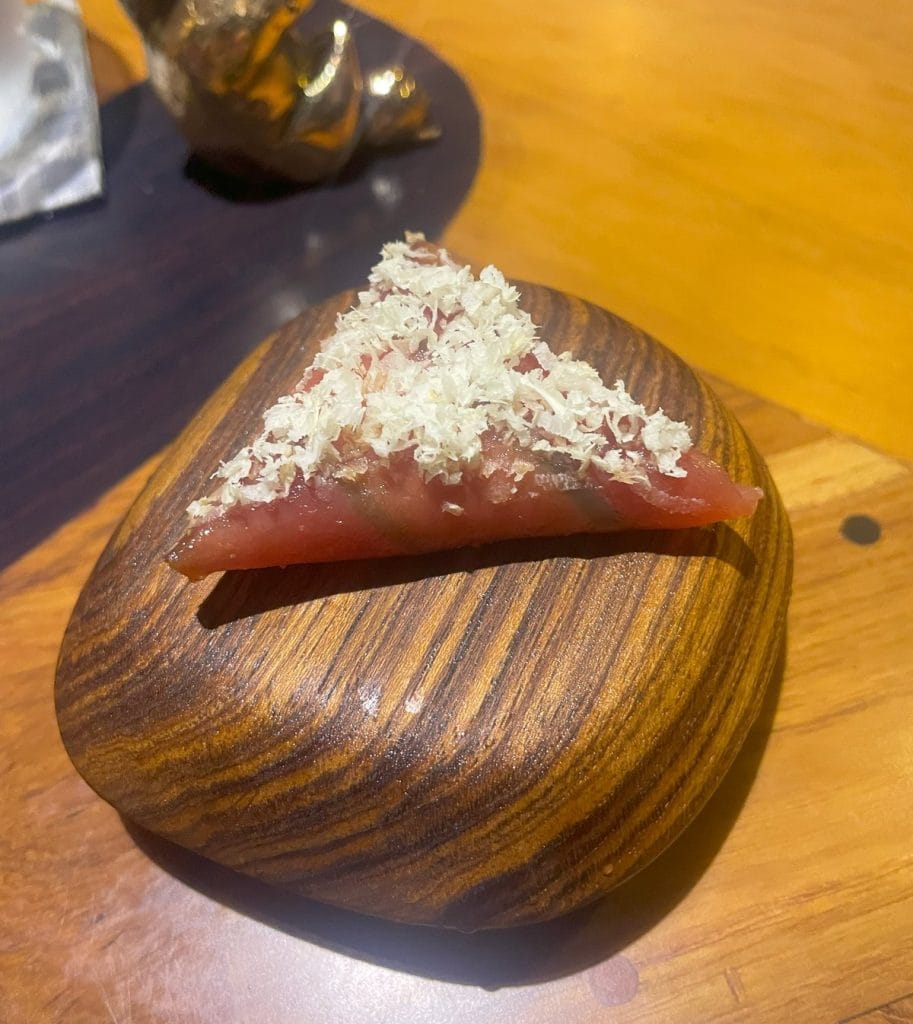
The real star, though, is the menu, even if it does cost around Rs 10,000 a pop, with drinks. Many dishes are named after or inspired by Indian comfort food, but what follows veers into surrealism: thayir sadam (curd-rice) with shiso, laddoos with foie gras, brunost and persimmon mawa khaja. Such is the culinary extravaganza inside this small wood-panelled dining space that Papa’s was the only Indian restaurant featured in TIME magazine’s annual list of the World’s Greatest Places this year. Food & Wine also named it one of the world’s 15 best restaurants of 2025.
Though the buzz around Papa’s is relatively new on Mumbai’s dining circuit, the team behind it isn’t. It’s run by Hunger Inc., the group behind go-to spots like O Pedro, The Bombay Canteen, Bombay Sweet Shop, and Veronica’s. One of its co-founders was the late Floyd Cardoz, the Indian chef who famously won Top Chef Masters and made his name in New York. He was a mentor to Hunger Inc co-founders Sameer Seth and Yash Bhanage, as well as to executive chef Hussain Shahzad. Papa’s is named in his honour.
“We all fondly called Chef Floyd Cardoz “Papaji”, a term which means Dad. He was more than a mentor; he was family. Naming the restaurant Papa’s felt like the most natural tribute to him,” said Shahzad, as he plated the first dish of the menu. It’s a “Samosa” only in name—a translucent triangle of tuna, folded delicately around horseradish and kaffir lime. But some dishes have shockingly literal names.
Also Read: These chefs are done taking orders. They’re turning entrepreneurs
Bugs, bunnies, balance
Initially, Chef Hussain Shahzad wanted to serve fried rabbit at Papa’s — inspired by Rabbit 65, a bar snack he grew up eating in Chennai. But he couldn’t quite get it right. During early tastings, Bhanage jokingly said, “If you add bugs to it, would you call it Bugs Bunny?”
The name stuck, even though the original dish didn’t. What finally made the cut was a rabbit sausage roll tucked into a soft milk bun, topped with pickled mustard seeds and red ants for a citrusy kick. Bugs Bunny is served with a spicy pineapple ketchup on the side.
Each dish has gone through weeks, or even months, of trial and error. In the case of the ‘bunny’, after the fried version failed, a nearby shawarma shop sparked the idea of a rabbit wrap, which eventually morphed into the sausage roll. The menu also changes occasionally, depending on what is seasonally available.
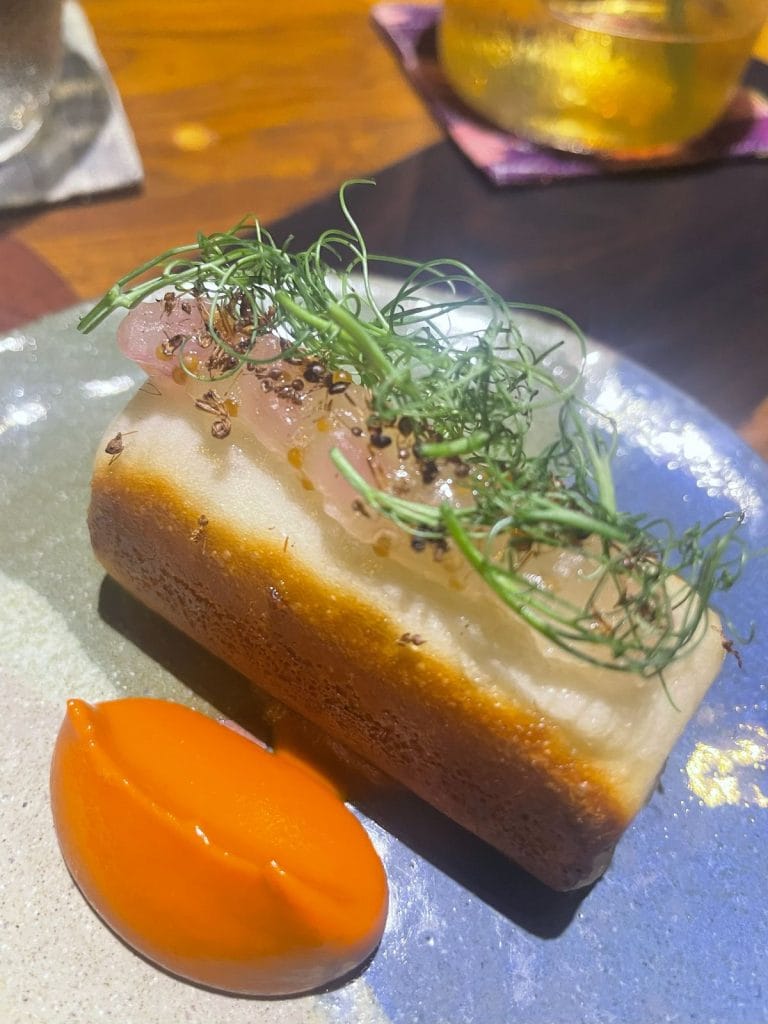
“Papa’s is where everything I’ve learned, followed, and broken in the kitchen comes together,” said Shahzad, who has worked with the award-winning Eleven Madison Park in New York.
The kitchen stays behind the scenes, with prep done in advance. On the floor, service moves smoothly, with ten staffers working in sync to bring out each dish. It’s all kept deliberately informal and dynamic, although the food itself is crafted with finesse.
“Cooking without rules sounds thrilling, but without structure, it’s easy to lose direction. We had to learn how to pace a meal, balance flavours, and keep the experience engaging from start to finish,” added Shahzad.
Before, [fine dining] was all about offering a bit of everything—Continental, Italian, Indian, whatever. Now, the shift is inward. It’s about focus, clarity, precision
-Viraf Patel, chef
The most striking aspect of each course is the inventive combinations in both the veg and non-veg tasting menus, with no chicken or paneer in sight. Unlike its sibling restaurant The Bombay Canteen, which leans heavily on its Indian-local-seasonal pitch, Papa’s is more about experimentation.
Cookbook author Sonal Ved, who knew the late Floyd Cardoz personally, says Papa’s carries forward his “spirit”.
“It stands out quietly in a city where every second restaurant is trying to shout its story. The food here arrives like a Lucky Ali ‘hmm’—gentle, unforced, and effortlessly soulful,” said Ved, whose books include The Indian Vegan, Tiffin, and Whose Samosa Is It Anyway?
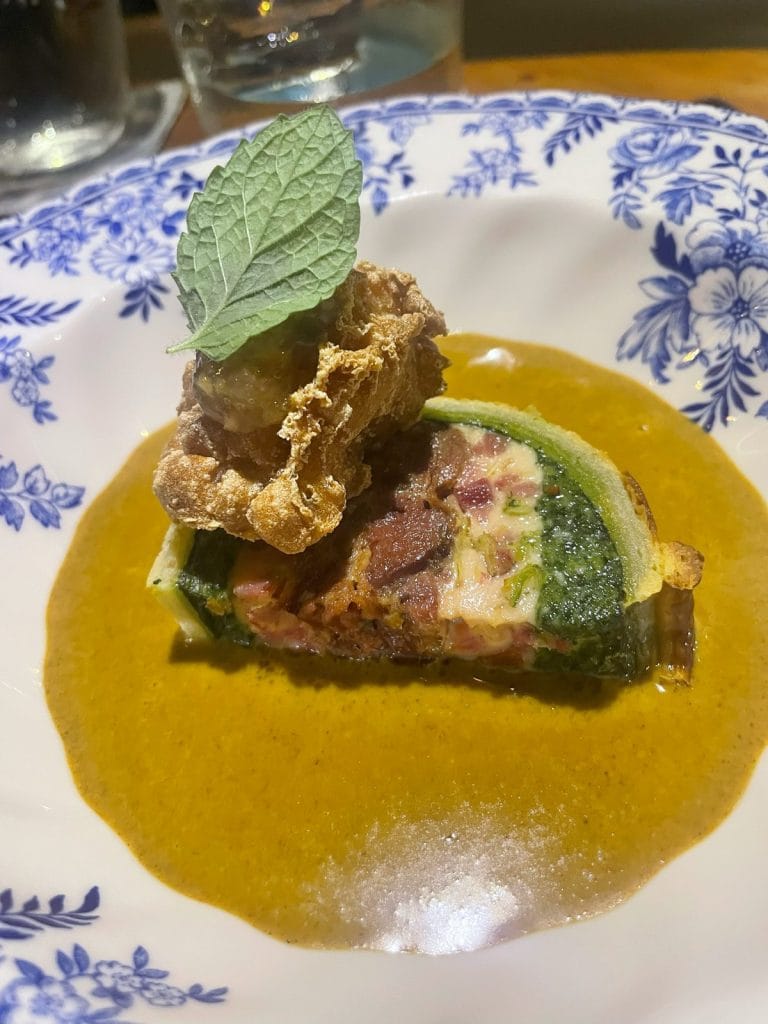
Other than Papa’s, she lists Masque, Americano, Sobo 20, Koishii, and Mezzo Mezzo among her favourite fine-dining spots. Each has its own USP, and for Papa’s, it’s inventiveness.
“Whether you see it as a lab, a playground, or an amusement park, what Papa’s offers is food that knows exactly what it stands for. And it goes well beyond the familiar,” she said.
Wazwan to McDonald’s influences
At the crescent-shaped table on a Saturday evening, Shahzad stood before his guests and asked, “Ever had Thayir Sadam?”
A chorus of yeses followed, bringing a smile to his face. “This will remind you of just that — only now, it’s with beetroot, chivda, and shiso.”
The bowl in front of them was white, the contents bright red and crowned with a fried shiso leaf. As diners crushed the leaf into the mix and took their first bites, the flavour was familiar—then not. This version of the South Indian comfort food came with goat’s milk yoghurt and cheese, beetroot tartare, a shiso papad, and pickle from Mylapore Ganapathy Stores in Chennai.
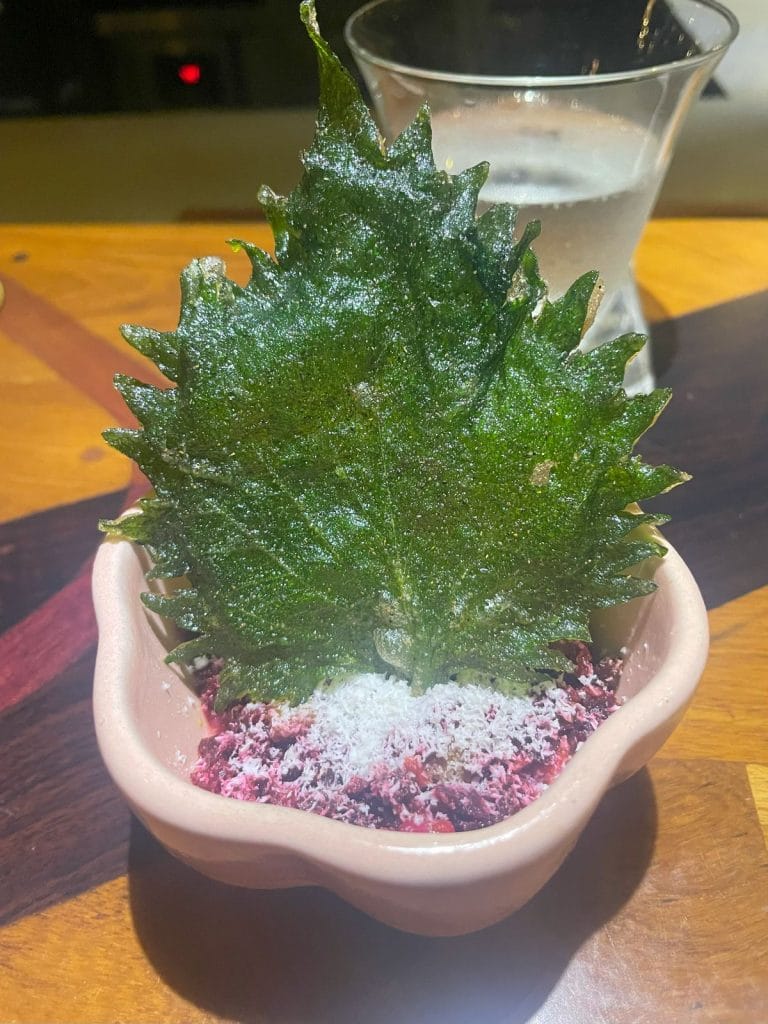
Every dish comes with a story, which Shahzad shares between courses.
“That’s a very deep memory for me,” said Shahzad, who grew up in Chennai. “You don’t need to fix what’s not broken, you just need to reimagine it.”
With limited seats and high demand, Papa’s proves a bit of exclusivity can still work. But for food influencer Sameer Bawa, what keeps people coming back is the sense of community that Shahzad builds over the course of the meal, which stretches over at least three hours.
[The dessert ‘Potato Chip’] is our tribute to honey noodles and ice cream from Indian-Chinese restaurants. And also to the joy of dipping salty fries into vanilla soft serve at McDonald’s
-Hussain Shahzad, Papa’s executive chef
“Each preparation carries soul and seamlessly ties into Chef Hussain’s narrative. Nothing is done just for effect; everything has meaning,” said Bawa, whose favourites include Bugs Bunny, Thayir Sadam, and Lamb Nihari Pie.
While the essence of the cuisine at Papa’s is unmistakably Indian, its culinary language is global. Techniques borrowed from French, Japanese, and British kitchens are blended with Indian flavours.

The ingredients, too, reflect this fusion of worlds — red ants from Odisha, rabbit meat from farms in Nashik, and Indrani rice from Maharashtra. The mushrooms are sourced from a specialised grower in the NCR region, while the caviar is the Ossetra variety.
“It’s a global pantry with a local soul. If an ingredient adds depth, sparks a memory, or elevates the experience, it belongs to Papa’s,” said Shahzad.
One of his favourites is Potato Chips, a dessert he calls the “north star” of the menu— crisp shoestring fries glazed in honey-butter-truffle, laid over a Champagne sabayon, and topped with lemon gelato.
“It’s our tribute to honey noodles and ice cream from Indian-Chinese restaurants,” he said. “And also to the joy of dipping salty fries into vanilla soft serve at McDonald’s. Those are the flavour memories that linger.”
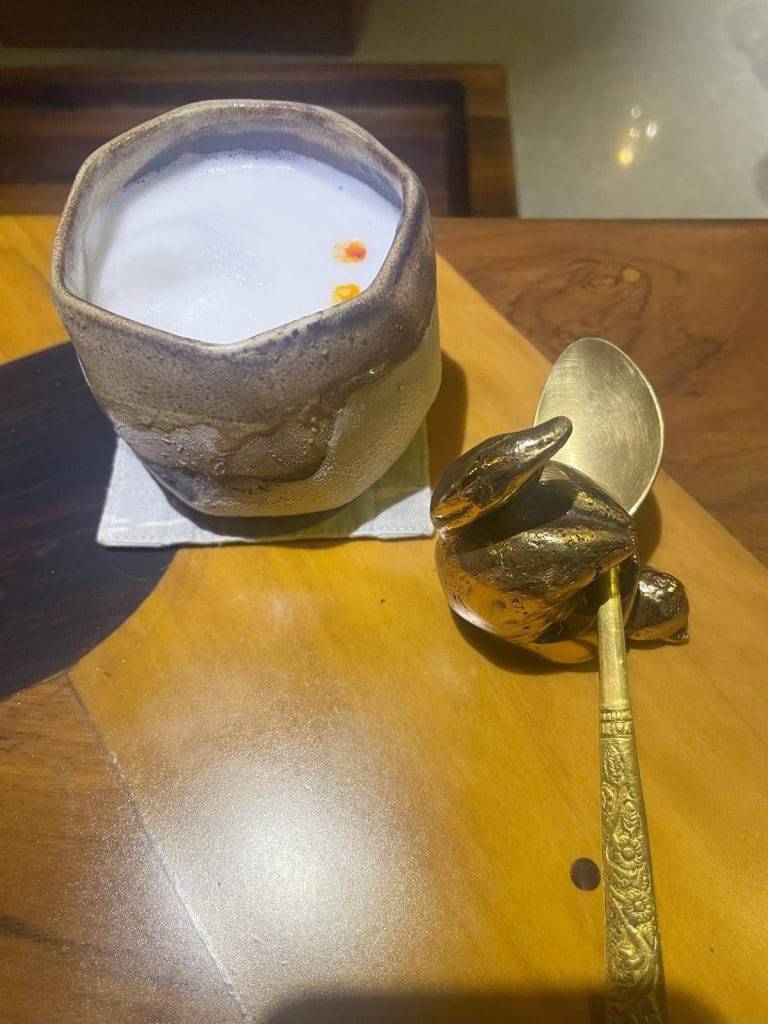
Some other standout dishes include a Wellington-like pie with Kashmiri Wazwan influences, modak stuffed with char siu pork, and a duck biryani that fuses the smoky richness of South Indian Ambur biryani with the technique of Spanish paella.
The drinks are equally subversive. Each cocktail uses three ingredients, but not the ones you’d expect. A dirty martini swaps brine for olive oil, giving it an addictive umami kick. There’s one inspired by methi-thepla (Fenugreek God), one featuring clams (Sea Biscuit), and another that tastes like pizza (Papa’s Hut).
These were developed by Bhanage and Pankaj Balachandran, mixologist and co-founder of Countertop India.
“They worked on making the cocktails smashable, where you want to have one after the other,” said Seth, who’s worked for nearly 20 years in hospitality management.
Think of it like a stage. A space where real drama unfolds, like a puppet theatre or a circus ring. And just like performers need their rest, we open only four days a week
-Sameer Seth, Hunger Inc co-founder
Flavour is the guiding force for every plate and pour.
“We push the flavour boundaries first,” Seth said. “And then interpret its form.”
That kind of confident, individual identity signals where fine dining in India is headed, said Chef Viraf Patel, who runs the Tibetan restaurant Across in Mumbai’s Kala Ghoda and consults for several others.
“Before, it was all about offering a bit of everything—Continental, Italian, Indian, whatever,” said Patel. “Now, the shift is inward. It’s about focus, clarity, precision. Quality is placed above quantity.”
Also Read: Indian chefs are inviting you home for food & stories. Pop ups are the newest dining trend
Fine dining, unscripted
Traditional fine-dining can often feel like a stiff, over-rehearsed ceremony: hushed conversations, an air of restraint, and a graceful command of three forks, five spoons, and a perfectly pressed white napkin.
With Papa’s, the trio—Seth, Bhanage, and Shahzad—who’ve all cut their teeth in the world of fine dining, decided it was time to rewrite the rules.
“We wanted this to feel right for today. Fine dining has become way too serious,” said Seth. Part of that meant going back to a simpler time.
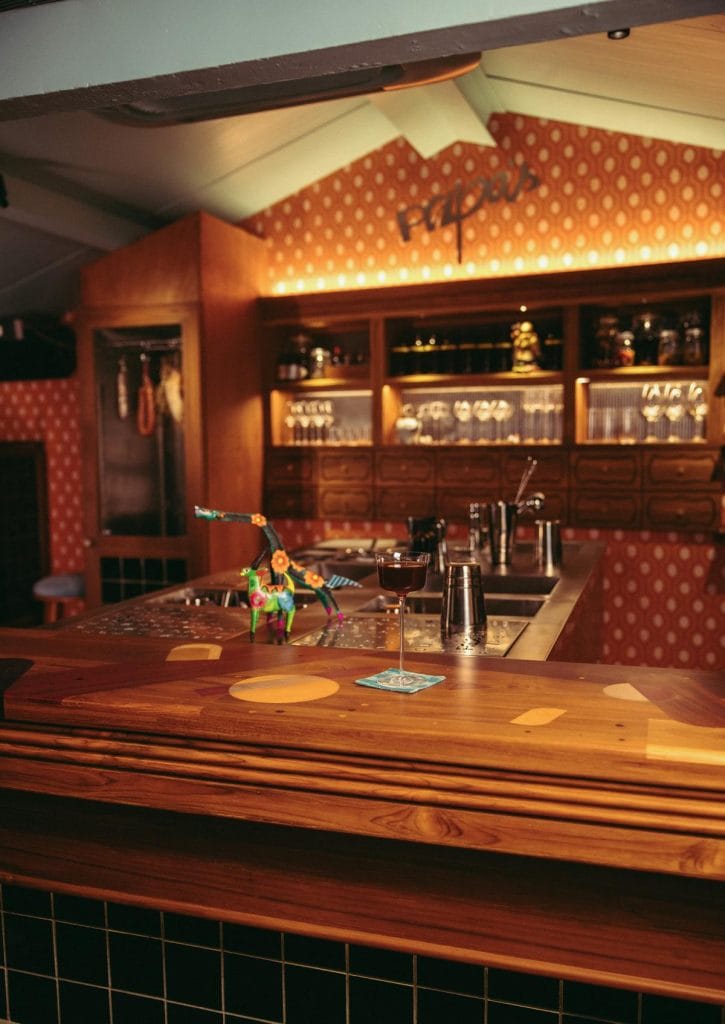
While designing Papa’s with architect Shonan Purie Trehan, the team spent hours watching Wes Anderson films for inspiration, especially for the warm, vintage colour palette they were after.
They reimagined the cosy attic above Veronica’s through a lens of 1980s nostalgia.
“It feels almost like the chef has personally invited you into his home,” said Seth.
The first thing guests see is a cocktail bar inspired by an old Bandra art gallery—regal, wood-lined, and full of character. Much of the wood used for the tables and chairs comes from the early days of Bombay Canteen.
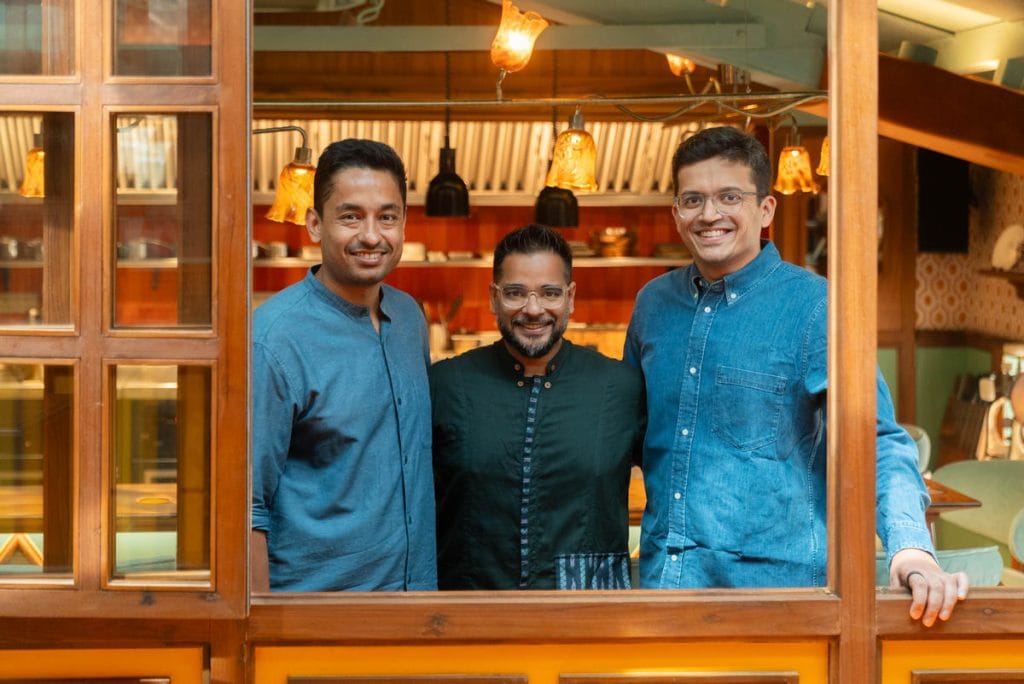
Just beyond it is the 12-seater setup, which opens into the kitchen. The table and kitchen counter are built at the same height to create a fluid, seamless connection that makes guests feel as if they are part of the action, not just spectators.
The atmosphere is informal and social, more like a family dinner where everyone happens to be strangers. Guests socialise and laugh along as Shahzad weaves in stories and one-liners between courses. The pacing is generous, and he makes sure no one feels rushed. Exclamations of surprise are common. During the Thayir Sadam course, there was a chorus of “oh my gods” as the guests took their first bite together.
“Think of it like a stage,” said Seth. “A space where real drama unfolds, like a puppet theatre or a circus ring. And just like performers need their rest, we open only four days a week.”
Ved says other restaurants could learn from Papa’s confidence in its own identity.
“Tell your story, not someone else’s,” she said. “If your restaurant has a narrative, make sure it’s authentic, not just what’s trending. Papa’s stands out because it doesn’t follow the formula.”
(Edited by Asavari Singh)



